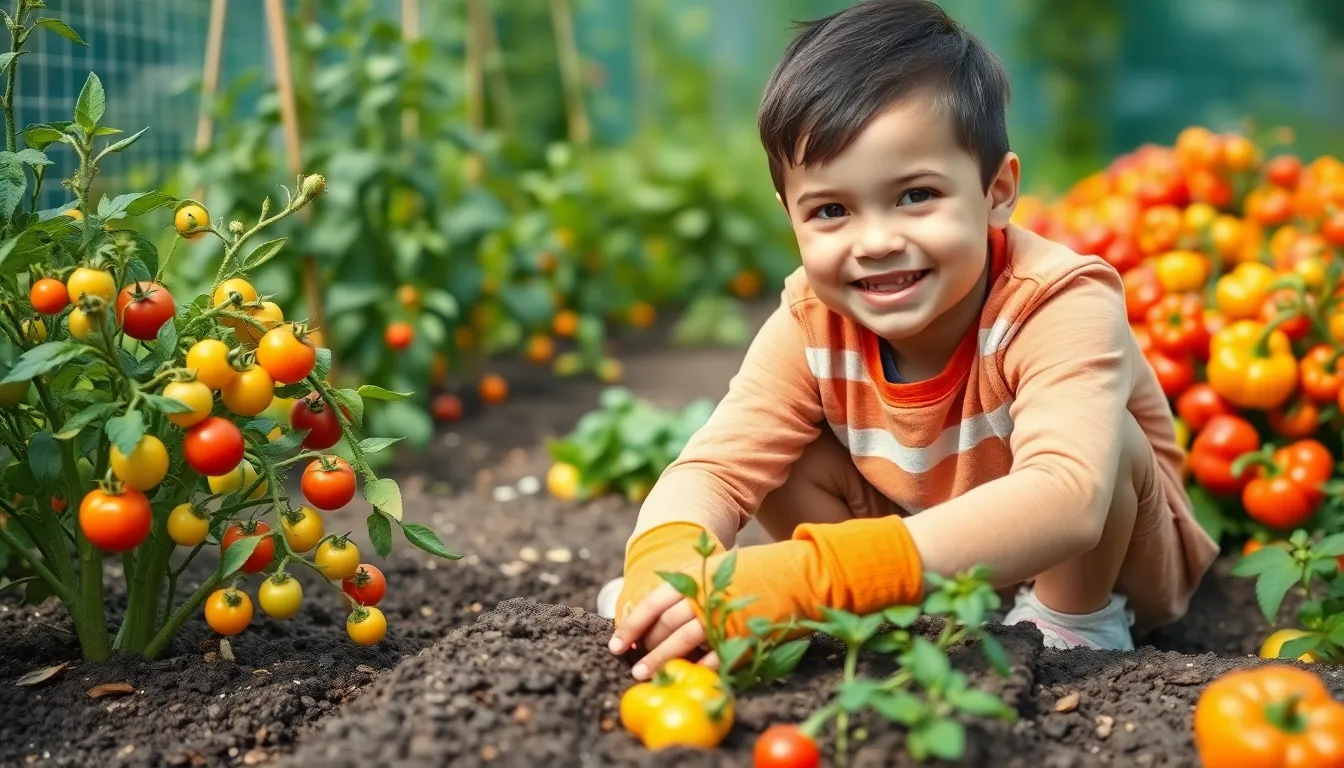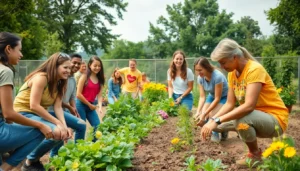Table of Contents
ToggleImagine your kids digging in the garden, hands dirty and faces beaming with excitement. Garden-to-table cooking isn’t just a trendy phrase; it’s a delightful adventure that transforms little ones into culinary wizards. By growing their own veggies, kids learn where food comes from and, let’s be honest, they might even eat those green things if they helped grow them!
Benefits of Garden-to-Table Cooking for Kids
Garden-to-table cooking provides kids with a direct link to their food sources. Learning through participation enhances their understanding of nutrition.
Encouraging Healthy Eating Habits
Promoting healthy eating habits occurs organically through garden-to-table cooking. When kids grow their own vegetables, they tend to make healthier choices. They become more inclined to try greens and unfamiliar vegetables that they planted. Hands-on gardening experiences increase their willingness to consume fresh produce. Cooking the food they’ve grown reinforces excitement and curiosity about nutrition. Parents notice increased vegetable intake and improved dietary diversity. Data shows kids involved in gardening eat 80% more fruits and vegetables than peers.
Fostering a Love for Nature
Developing a love for nature starts with engaging kids in gardening. They connect with the environment as they plant seeds and watch them grow. Observing plants thrive nurtures a sense of responsibility. Kids develop appreciation for sustainability and the importance of eco-friendly practices. Experiencing the life cycle of plants sparks curiosity about ecosystems. Learning about pollinators emerges through hands-on activities in the garden. Studies indicate that children who garden often exhibit lower levels of stress and enhanced mental well-being.
Getting Started with Garden-to-Table Cooking

Getting started with garden-to-table cooking encourages children to engage with food in meaningful ways. This approach combines gardening with cooking, fostering healthy habits and dietary diversity.
Choosing the Right Plants
Selecting the right plants sets the foundation for successful garden-to-table cooking. Consider quick-growing options like radishes, lettuce, and herbs which are easy for kids to nurture. Both colorful and tasty vegetables entice children to take part in gardening. Varieties such as cherry tomatoes and bell peppers appeal to young eaters, making the experience enjoyable. Choose plants that grow well in your local climate and are resilient, ensuring children can witness their progress without frustration. Incorporating a mix of vegetables and herbs enhances the array of flavors available for cooking.
Involving Kids in the Gardening Process
Involving kids in the gardening process helps them develop a sense of ownership and responsibility. Assign children specific roles, such as planting seeds, watering plants, or harvesting produce. Each task teaches valuable lessons about growth cycles and nurturing plants. Encourage kids to decorate plant markers, adding a personal touch to their garden space. Engage children in discussions about soil health, pest management, and sustainability practices. Through hands-on activities, children gain confidence and a deeper appreciation for where their food comes from. Celebrating the harvest creates excitement, further motivating them to try new recipes with their fresh produce.
Simple Recipes for Kids
Kids can create delicious dishes using fresh ingredients from the garden. Simple recipes encourage exploration and enjoyment of healthy foods.
Fresh Salads from the Garden
Fresh salads offer a quick and nutritious option for kids. Leafy greens, cherry tomatoes, and cucumbers easily come together in a bowl. Kids can wash and chop vegetables under adult supervision. Encourage them to mix in fresh herbs like basil or parsley for added flavors. Olive oil and vinegar work as simple dressings, enhancing the taste without added sugars. A colorful salad makes healthy eating exciting and visually appealing. Experimenting with different combinations teaches children about nutrition. Including edible flowers from the garden can add visual interest, creating an inviting meal option.
Homemade Sauces and Dressings
Homemade sauces provide a fun way for kids to experiment in the kitchen. Tomato sauce from fresh tomatoes enables children to appreciate the difference between store-bought and homemade. Children can gather tomatoes, garlic, and herbs for a flavorful mix. A quick blend in a food processor yields a delicious pizza or pasta sauce. Yogurt-based dressings can be made, incorporating herbs and spices for a refreshing dip. Kids can learn to customize flavors based on their preferences, making meals more enjoyable. Combining fresh ingredients fosters creativity and builds culinary skills while promoting healthy eating habits.
Tips for Successful Cooking Experiences
Successful cooking experiences empower children to engage fully in garden-to-table cooking. Prioritizing safety and enjoyment enhances their learning and connection to food.
Safety in the Kitchen
Safety in the kitchen remains crucial for young chefs. Always supervise children during cooking, ensuring they understand the importance of staying safe around hot surfaces and sharp utensils. Involve kids in simple tasks like washing vegetables, as this builds confidence while minimizing risks. Teach them proper handwashing techniques to emphasize hygiene, which prevents contamination. Implement rules about personal space near hot stoves or ovens to reinforce caution. Create a designated area for utensils and tools, making it easier for children to find what they need without clutter.
Making Cooking Fun and Engaging
Making cooking fun and engaging captivates young minds. Introduce creative themes, such as “Rainbow Day,” to inspire kids to include colorful vegetables in their meals. Encourage them to name their dishes, fostering a sense of ownership over their creations. Allowing them to choose recipes can increase involvement while exploring diverse taste combinations. Incorporate music or storytelling during cooking sessions to enliven the atmosphere. Celebrate small successes, such as successfully chopping vegetables or plating a dish, to motivate continued participation and spark excitement.
Garden-to-table cooking offers children a unique opportunity to connect with their food in a meaningful way. By engaging in gardening and cooking, kids develop healthy eating habits and a deeper understanding of nutrition. This hands-on experience not only fosters a love for fresh produce but also instills a sense of responsibility and appreciation for the environment.
Parents can encourage this journey by involving their children in every step from planting seeds to preparing meals. As they explore new recipes and celebrate their harvests, kids gain valuable life skills and a curiosity about healthy eating. Ultimately, garden-to-table cooking serves as a powerful tool for promoting wellness and nurturing a lifelong passion for good food.






